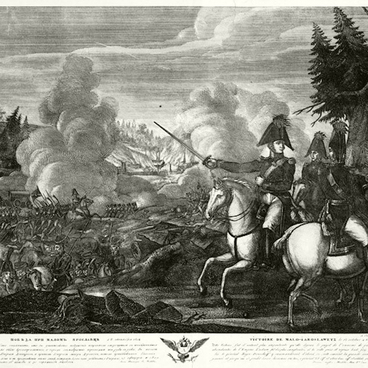A table with the top covered with green cloth was added to the museum collection in 1994. It was acquired for a new exhibition in the memorial house of the Decembrist Matvey Muravyov-Apostol, which at that time was being prepared to open after restoration.
The table got its name thanks to the popular card game ombre, which came about in the XIV century. At that time, in Spain where ombre was birthed, enthusiasts would sit down to play at regular tables. To prevent the cards from slipping, the surface of the tabletop was covered with a dense woolen cloth material. The color green was often chosen for this purpose, as it was considered the most pleasing to the eye. The score was also recorded on the cloth with chalk. Special card tables - bright, light, folding ones - first appeared in France, and over time saw widespread use for all card games.
The ombre card game arrived in Russia as late as the 18th century. The Russian card table would fold and unfold and turn into a square covered in green cloth. Calculations were recorded on it while playing, and the remaining chalk left on the cloth was brushed off with a special brush. Aristocrats could frequently be seen gathering at these ‘green tables.’ These green tables, or so-called ombre tables, were made of mahogany in the 19th century and had carved legs thinning downwards. There were no perpendicular boards set in the tables, as they would cause difficulties for the player.
Playing cards was a popular pass time among nobles. Retired Lieutenant Colonel Matvey Muravyov-Apostol, the Decembrist, hero of the Patriotic War of 1812 and foreign campaigns in 1813-1814 belonged to this privileged class. Guests were a frequent treat in the house where he lived in YalUtorovsk, be it exiled Decembrists, their families, or friends. As the author and editor of Tobolsk Provincial Gazette Kapiton Golodnikov recalled, they:
The table got its name thanks to the popular card game ombre, which came about in the XIV century. At that time, in Spain where ombre was birthed, enthusiasts would sit down to play at regular tables. To prevent the cards from slipping, the surface of the tabletop was covered with a dense woolen cloth material. The color green was often chosen for this purpose, as it was considered the most pleasing to the eye. The score was also recorded on the cloth with chalk. Special card tables - bright, light, folding ones - first appeared in France, and over time saw widespread use for all card games.
The ombre card game arrived in Russia as late as the 18th century. The Russian card table would fold and unfold and turn into a square covered in green cloth. Calculations were recorded on it while playing, and the remaining chalk left on the cloth was brushed off with a special brush. Aristocrats could frequently be seen gathering at these ‘green tables.’ These green tables, or so-called ombre tables, were made of mahogany in the 19th century and had carved legs thinning downwards. There were no perpendicular boards set in the tables, as they would cause difficulties for the player.
Playing cards was a popular pass time among nobles. Retired Lieutenant Colonel Matvey Muravyov-Apostol, the Decembrist, hero of the Patriotic War of 1812 and foreign campaigns in 1813-1814 belonged to this privileged class. Guests were a frequent treat in the house where he lived in YalUtorovsk, be it exiled Decembrists, their families, or friends. As the author and editor of Tobolsk Provincial Gazette Kapiton Golodnikov recalled, they:


